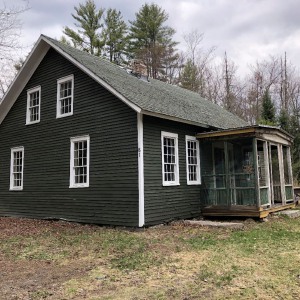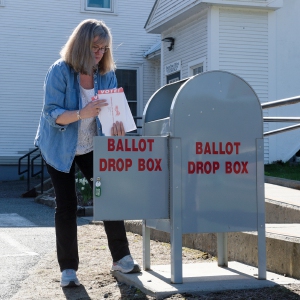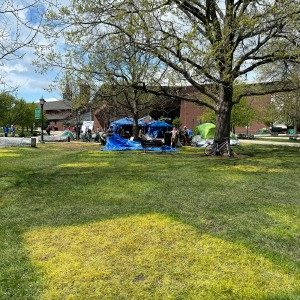KUA child care center relocates following lead paint discovery

On the Kimball Union Academy campus on Monday, Feb. 5, 2024, the KUA Daycare Center was empty due to trace levels of lead having been found in the building in Meriden, N.H. (Valley News - Jennifer Hauck) Copyright Valley News. May not be reprinted or used online without permission. Send requests to permission@vnews.com. Valley News — Jennifer Hauck
| Published: 02-06-2024 6:06 PM |
MERIDEN — After the blood tests of a child of a Kimball Union Academy faculty member showed elevated levels of lead, subsequent testing of the building that housed the school’s child care center also revealed “trace” levels of the toxic heavy metal, according to school officials, prompting the center’s relocation last week.
Kimball Union Academy, or KUA, is a private boarding high school. The child care center primarily serves the children of faculty and staff, but also enrolls children from elsewhere in the community.
Lead exposure can cause brain, blood, kidney and nervous system damage, and increase the chance of learning and behavioral issues, especially in young children, according to the Public Health Council of the Upper Valley.
One in five attention deficit disorder diagnoses can be attributed to lead exposure, according to research from the American Academy of Pediatrics.
After the relocation of the child care center, the school is now undergoing testing of faculty residences that are home to children under the age of six, said Tricia McKeon, KUA’s director of marketing and communications, on Monday.
In some cases, those tests have also returned elevated lead levels.
“We’re getting in line and helping families with this,” McKeon said.
It was a quick pivot to move the child care center from the former, older building off of Main Street to its current space in a “brand new” building on Route 120, McKeon said. The impacts of lead grow more severe with extended exposure.
Article continues after...
Yesterday's Most Read Articles
 Dartmouth administration faces fierce criticism over protest arrests
Dartmouth administration faces fierce criticism over protest arrests
 Hanover house added to New Hampshire Register of Historic Places
Hanover house added to New Hampshire Register of Historic Places
 Sharon voters turn back proposal to renovate school
Sharon voters turn back proposal to renovate school
“We worked overnight to make (the new building) a safe and welcoming space for children the next day,” she said.
Some students were allowed to return to school in the new space on Thursday, after having been notified of lead in the former building on Wednesday.
“Faculty children were allowed to come in the first day just to have a reduced number of students,” McKeon said. “Anytime you open a new space you want some time to test it — and then we allowed our external families in the next day.”
“Trace” amounts of lead were identified as having entered the former child care building from a previous layer of paint in window wells — likely exposed by the friction of opening and closing the windows, McKeon said.
Because the center is operated by a secondary school, the facility is exempt from State of New Hampshire licensing requirements that include screening for lead. McKeon did not respond by deadline to request for comment on any previous attempts on behalf of the school to screen for lead in the child care building.
Old lead paint creates a “microscopic lead dust,” said Beverly Baer Drouin, an administrator in the state’s Division of Public Health Services.
“If you had lead dust in your home on the floor, and the child was crawling on the floor and they’re very hand to mouth, their hands might be exposed to lead,” Baer Drouin said.
Lead isn’t airborne, she emphasized. “It’s very heavy.”
That the lead was found in the window wells is “incredibly common,” said Alice Ely, executive director of the Public Health Council of the Upper Valley. “There’s a lot of old housing stock around here.”
Lead-based paints were banned in 1978.
It’s crucial to test kids under the age of six who have been exposed to lead because that’s typically before the “blood-brain barrier” develops, Ely said.
The barrier prevents toxins in the blood from getting into brain tissue, according to the Centers for Disease Control and Prevention.
“Brain damage caused by lead exposure can be devastating, in terms of intellectual development, in terms of a child’s emotional development,” she said.
Of the children exposed in KUA’s child care center, “they were there, and there’s nothing you can do about that,” Ely said. “If the findings weren’t egregious but there were some elevated levels, just be sure to get your kids tested, and see what you find.”
Frances Mize is a Report for America corps member. She can be reached at fmize@vnews.com or 603-727-3242.

 Students take down pro-Palestinian encampment at UVM
Students take down pro-Palestinian encampment at UVM
